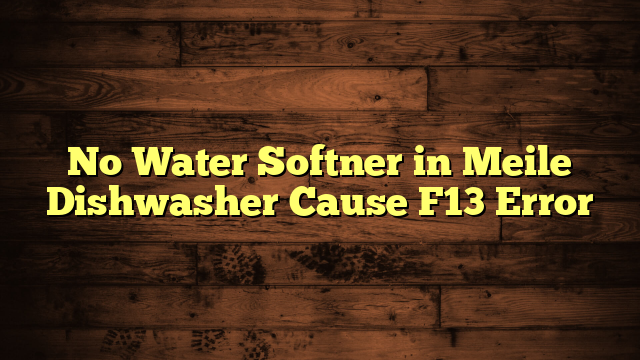Installing Water Softner to Poly Tube Water Lines
Installing a water softener to your poly tube water lines is like laying the foundation for a smoother, more efficient home. You might be wondering how to assess your current water quality and the fit of your existing pipes before you even begin. Knowing what tools you'll need and where to position the softener are essential steps that can't be overlooked. As you start this process, keep in mind that the right approach can save you both time and money, but there are nuances you'll want to grasp first.
Key Takeaways
- Test the water quality to determine hardness levels before installing the water softener.
- Ensure compatibility of the water softener with poly tube water lines and the main supply line.
- Use a tubing cutter for precise cuts on the poly tubing, measuring twice before cutting.
- Tighten all connections securely to prevent leaks and monitor them after restoring the water supply.
- Follow the specific model's manual for installation tips and maintenance guidelines for optimal performance.
Understanding Water Softeners
Water softeners are essential tools for combating hard water, which can cause various problems in your home. Hard water contains high levels of minerals like calcium and magnesium, affecting your water quality and leading to issues such as scale buildup in pipes and appliances.
This can decrease their efficiency and lifespan, costing you more in repairs and replacements.
The softening process typically involves ion exchange, where hard minerals are replaced with sodium ions. When water flows through the softener, it passes over resin beads that attract and hold these troublesome minerals, allowing the now softened water to flow through your system.
This process not only enhances your water quality but also makes it gentler on your skin and hair, improving your showering experience.
Assessing Your Water Lines
Before installing a water softener, it's important to assess your water lines to guarantee a proper fit and ideal performance.
Start by checking the water quality in your home. You can do this by testing for hardness levels, which will help you determine the type of softener you need. If your water contains high mineral content, you'll want a unit that can handle that load efficiently.
Next, evaluate the pipe condition. Inspect your poly tube water lines for any signs of wear and tear, such as leaks, discoloration, or cracks.
Damaged pipes can affect how well your water softener performs and may lead to further plumbing issues down the line.
Ensure that all connections are secure and that the lines are free from blockages. If you spot any significant damage, it may be wise to replace the affected sections before proceeding with the installation.
Tools and Materials Needed
Before you get started with your water softener installation, you'll need to gather some essential tools and materials.
A checklist can help guarantee you have everything on hand, from wrenches to PVC pipes.
Don't forget to include safety gear, as protecting yourself during the installation process is vital.
Essential Tools Overview
Installing a water softener requires a few essential tools and materials to confirm the job runs smoothly. To start, you'll need a pipe cutter for cutting the poly tubing accurately. A wrench is important for tightening and loosening fittings, making certain of a secure connection.
Don't forget a measuring tape to help you determine the right lengths of tubing needed for your installation. For safety, have a pair of gloves on hand to protect your hands during the process. A bucket can catch any water that spills during the installation, preventing a mess.
Furthermore, consider having a level handy to make sure your water softener sits straight, which is crucial for maintaining the best water quality. Lastly, while not a tool, having a manual for your specific water softener model can provide valuable installation tips.
This guide will help you navigate the unique aspects of your system. With these tools gathered, you'll be well-prepared to tackle the installation confidently, making certain you achieve the best results for your home's water quality.
Required Materials Checklist
To successfully install your water softener, you'll need to gather a few key materials alongside the tools you've already prepared.
Start with a water softener unit, which is essential for treating hard water and improving your water quality. You'll also require a bypass valve, which allows you to divert water around the softener when necessary.
Next, stock up on fittings, including connectors and adapters appropriate for poly tube water lines.
Don't forget plumber's tape to guarantee watertight seals, and some PVC cement if you're working with PVC pipes. You might also want to have a bucket on hand to catch any spills during installation.
For installation tips, consider obtaining a water test kit. This will help you evaluate your water quality before and after the installation, allowing you to gauge the softener's effectiveness.
Finally, collect some flexible tubing for drainage and a salt storage container if your unit requires it.
With these materials ready, you'll be well-equipped to tackle your water softener installation, guaranteeing efficient performance and improved water quality in your home.
Safety Gear Importance
When tackling a water softener installation, having the right safety gear is vital. It's not just about getting the job done; it's about doing it safely.
Start by wearing gloves to protect your hands from sharp tools or any chemicals you might encounter. Safety goggles are a must, too, as they shield your eyes from potential debris or splashes.
Don't forget sturdy shoes! You'll want footwear that provides solid grip and protection while you're moving around.
As you work, keep a first-aid kit nearby just in case of minor accidents.
Implementing these safety precautions can make a huge difference. While it might seem tedious, taking a few minutes to gear up guarantees you can focus on the task without worrying about injuries.
Additionally, consider a dust mask if you're working in a dusty environment, especially if you're cutting or sanding materials.
Protective equipment isn't just an afterthought; it's a vital part of the installation process that helps prevent accidents.
Preparing the Installation Site
Preparing the installation site for your water softener is vital for guaranteeing ideal performance and longevity. Start by choosing a suitable location, as site selection plays a significant role in how efficiently your unit operates.
Look for an area that's:
- Close to the main water line: This helps minimize pipe runs and potential pressure loss.
- On a level surface: Verify the ground is stable and even to support your unit securely.
- Easily accessible: You'll want room to work and maintain the system easily in the future.
- Away from extreme temperatures: Avoid areas exposed to freezing or excessive heat, as they can damage the softener.
Once you've selected the perfect spot, focus on surface preparation. Clear debris, rocks, or any obstructions from the area to create a clean foundation.
If the ground is uneven, consider leveling it or using a sturdy platform to provide stability.
Taking the time to prepare your installation site properly not only simplifies the setup process but also optimizes your water softener's effectiveness and extends its lifespan.
With a well-prepared area, you're set for a successful installation!
Connecting the Water Softener
Now that you've prepared the installation site, it's time to connect the water softener.
You'll need some essential tools and materials on hand to make the process smooth and efficient.
Follow this step-by-step guide, and don't forget to test for leaks once you're done to guarantee everything's working perfectly.
Required Tools and Materials
Connecting a water softener requires a few essential tools and materials to guarantee a successful installation. Having the right equipment on hand not only streamlines the process but also assures that the water quality in your home improves considerably.
Here's a quick list of what you'll need:
- Pipe cutter: For cutting poly tubing smoothly.
- Teflon tape: To seal threaded connections and prevent leaks.
- Adjustable wrench: For tightening and loosening fittings securely.
- Hose clamps: To secure connections and keep everything tight.
Before you start, gather these items and familiarize yourself with any installation tips associated with your specific water softener model.
This preparation will help you avoid common pitfalls and make the installation process much smoother. Remember, the goal is to create a reliable and efficient system, so double-check that all materials are compatible with your poly tube water lines.
Step-by-Step Connection Process
To guarantee a seamless installation of your water softener, start by locating the main water supply line where you'll make the connection. Once you've identified the right spot, verify your softener placement is convenient for both access and maintenance.
Next, you'll need to cut the poly tubing using your tubing cutter. Remember to measure twice to avoid mistakes. After cutting, you can insert the necessary fittings to create secure water line connections. Confirm that you're using appropriate fittings compatible with your water softener and poly tubing.
Here's a simplified process to follow:
| Step | Action | Notes |
|---|---|---|
| 1 | Locate main water supply line | Verify it's easily accessible |
| 2 | Cut the poly tubing | Measure before cutting |
| 3 | Attach fittings and connect the softener | Check compatibility of fittings |
Once your connections are secure, you'll be ready to move onto the next steps in the installation process. Make sure everything is tight to prevent leaks and confirm efficient operation of your new water softener.
#
Testing for Leaks
After securing all the connections, it's important to test for leaks to verify your water softener operates efficiently. Performing leak detection is essential, as even a small leak can lead to significant water pressure issues and wasted resources.
Here's how to go about it:
- Turn on the water supply: Gradually restore water pressure while monitoring the connections.
- Inspect all joints and fittings: Look for any signs of moisture or dripping water around the areas you've connected.
- Use a towel: Wipe down the connections to confirm you're accurately spotting any leaks that may occur.
- Observe for several hours: Let the system run and check back periodically to confirm no leaks develop over time.
If you notice any leaks, turn off the water supply immediately and tighten the connections, or replace any faulty parts.
Don't underestimate the significance of this step; a thorough leak test can save you from future headaches and costly repairs.
## Testing for Leaks
How can you guarantee your newly installed water softener isn't leaking? Start by conducting thorough leak detection.
After installation, take a moment to visually inspect all connections and joints for any signs of moisture or water pooling. Even a small drip can lead to bigger issues over time, so don't overlook any suspicious spots.
Next, consider pressure testing your system. This involves closing off the water supply and using a pressure gauge to monitor any changes. If the pressure drops considerably over time, you might've a leak somewhere in your setup.
Make sure to check the gauge after a few hours; if the pressure stays steady, you're likely in the clear.
Additionally, you can use a towel or cloth to wipe down the connections and check for fresh water spots after a few hours. This simple method can help you catch leaks early.
Once you've confirmed your system is leak-free, you can enjoy the benefits of softened water without worrying about potential water damage.
Regular checks can save you hassle down the line, so make leak detection and pressure testing a part of your routine maintenance.
Maintaining Your Water Softener
Regularly maintaining your water softener is essential for guaranteeing its efficiency and longevity. By following a maintenance schedule, you can keep your system running smoothly and avoid costly repairs.
One of the key tasks is to monitor the regeneration cycles. These cycles help remove the accumulated hardness minerals from the resin beads, guaranteeing your water stays soft.
To maintain your water softener effectively, keep these points in mind:
- Check salt levels: Guarantee the brine tank has enough salt to support proper regeneration.
- Clean the system: Periodically clean the resin tank and brine tank to prevent buildup and clogs.
- Inspect for leaks: Regularly check the connections and hoses for any signs of leaks or damage.
- Test water hardness: Use a water hardness test kit to confirm that your softener is doing its job.
Troubleshooting Common Issues
When your water softener isn't performing as expected, it can be frustrating, but troubleshooting common issues can often lead to quick fixes.
Start by checking for any signs of water leaks. Diagnosing leaks is essential, as they can affect your softener's efficiency. Examine all connections and fittings, confirming everything is tight and secure. If you find a leak, tighten the connections or replace any faulty parts.
Next, consider adjusting settings. Sometimes, your water softener may not be set correctly for your water's hardness level. Refer to the manufacturer's guidelines to verify the settings match your specific needs. If you've recently changed your water source or noticed a shift in water quality, recalibrating the settings might be necessary.
Also, make sure the salt levels are adequate. Low salt can hinder the softening process, so check the brine tank regularly and refill as needed.
Frequently Asked Questions
How Long Does the Water Softener Installation Process Typically Take?
The installation timeline for a water softener varies based on installation complexity. Typically, it takes a few hours to a day. You'll need to prepare the area and make certain all necessary tools and supplies are ready.
Can I Install a Water Softener Myself, or Should I Hire a Professional?
Installing a water softener yourself is like maneuvering through a maze; it can be tricky. While DIY installation saves money, hiring a professional offers expertise and guarantees everything's done right, avoiding potential headaches down the line.
What Is the Average Cost of a Water Softener Installation?
The average cost of water softener installation varies by type, ranging from $300 to $2,500. You'll save money by researching water softener types and following installation tips, or you can hire a professional for assistance.
Are There Any Permits Required for Installing a Water Softener?
You'll need to check local permit requirements for installing a water softener. Installation regulations vary by area, so it's best to consult your local building authority to guarantee you meet all necessary guidelines and avoid potential fines.
How Often Should I Replace the Salt in My Water Softener?
Think of your water softener like a loyal pet; it needs regular care. You should check and replenish the salt types every 4-6 weeks. Following these maintenance tips keeps your system running smoothly and efficiently!
Conclusion
To summarize, installing a water softener to poly tube water lines can greatly enhance your water quality, much like adding a filter to a fine wine. By following the steps outlined, you can guarantee a successful installation that protects your plumbing and improves your home's water supply. Remember to regularly maintain your system and troubleshoot any issues that arise. With a bit of care, your water softener will serve you well for years to come.







